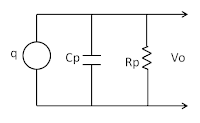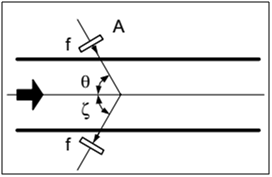LVDT- Linear Variable Differential transformer
Position and
displacement may be sensed by methods of electromagnetic induction. The most
commonly used inductive transducer to convert linear motion into electrical
signals is the Linear Variable Differential Transformer or LVDT as they are
commonly known.
An LVDT consists of one primary coil and two secondary coils.
The primary coil carries ac excitation (Vref) that induces a
steady ac voltage in the secondary coils. The induced amplitude depends on flux
coupling between the coils.
There are two
techniques for changing the coupling.
- One is the movement of a core made of ferromagnetic material within the flux path. This changes the reluctance of the path, which, in turn, alters the coupling between the coils. This is the basis for the operation of a LVDT (linear variable differential transformer), a RVDT (rotary variable differential transformer).
- The other method is to physically move one coil with respect to another.
Generally, the core is
made of high permeability, nickel iron which is hydrogen annealed. It gives low
harmonics, low null voltage.
The ac excitation in
the primary coil produces an alternating magnetic field which induces an
alternating current in the secondary coils. The secondary coils are connected
in series opposition. Hence the polarity of voltage induces is opposite in the
two secondary coils. When the core is positioned in the magnetic center of the
transformer, the secondary output signals cancel and there is no output voltage.
This is known as “null position”.
Moving the core away
from the central position unbalances the induced magnetic flux ratio between
the secondaries, developing an output. As the core moves, reluctance of the
flux path changes. Hence, the degree of flux coupling depends on the axial
position of the core. At a steady state, the amplitude of the induced voltage
is proportional to the core displacement. Consequently, voltage may be used as
a measure of a displacement. The LVDT provides the direction as well as
magnitude of the displacement. The direction is determined by the phase angle
between the primary (reference) voltage and the secondary voltage. Excitation voltage
is generated by a stable oscillator.
The LVDT is considered
a passive transducer because the displacement of the core, which is being
measured, itself provides energy for changing the induced voltage in the
secondary coil. Even though an external power supply is used to energize the
primary coil, which in turn induces a steady voltage at the carrier frequency
in the secondary coil, which is not relevant in the definition of a passive
transducer.
Note: Because of opposed secondary windings, the
LVDT provides the direction as well as the magnitude of displacement. When the
output signal is demodulated, its sign gives the direction. If the output
signal is not demodulated, the direction is determined by the phase angle
between the primary (reference) voltage and the secondary (output) voltage,
which includes the carrier signal.
For an LVDT to measure
transient motions accurately, the frequency of the reference voltage (the
carrier frequency) has to be at least 10 times larger than the largest significant
(useful) frequency component in the measured motion, and typically can be as
high as 20 kHz. For quasi-dynamic displacements and slow transients of the
order of a few hertz, a standard ac supply (at 50/60 Hz line frequency) is
adequate. The performance (particularly sensitivity and accuracy) is known to
improve with the excitation frequency, however. Since the amplitude of the
output signal is proportional to the amplitude of the primary signal, the
reference voltage should be regulated to get accurate results. In particular,
the power source should have a low output impedance.
Ideally the output at
the null position should be equal to zero. However in practice there exists a
small voltage at the null position. This may be due to presence of harmonics in
the input supply voltage, stray magnetic
fields, temperature effect among other reasons.
Calibration and Compensation
An LVDT may be
calibrated in millimeter per volt (mm/V), in its linear range. In addition, and
a displacement offset (mm) may be provided. This typically represents the least
squares fit of a set of calibration data. Since ambient temperature and other
environmental conditions will affect the LVDT output, in addition to the primary
and secondary coils, a reference coil may be available for compensation of the
LVDT output.
Advantages of the LVDT include the following:
1.
It is essentially a non-contacting
device with no frictional resistance. Lightweight
core will result in very small resistive forces.
2.
Hysteresis (both
magnetic hysteresis and mechanical backlash) is negligible.
3.
It has low output
impedance, typically in the order of 100 Ω.
4.
It provides directional
measurements (positive/negative).
5.
It is available in
miniature sizes as well (e.g., length of 1 or 2 mm, displacement measurements
of a fraction of a millimeter, and maximum travel or stroke of 1 mm).
6.
It has a simple and
robust construction (inexpensive and durable)
7.
It has fine resolutions
(theoretically, infinitesimal resolution; practically, much better than a coil
potentiometer)
Disadvantages
1.
They are sensitive to stray magnetic
field.
2.
Output signal need amplification due
to its small magnitude.
3.
Measurement is affected by
vibrations.
4.
Affected by temperature variation.







































